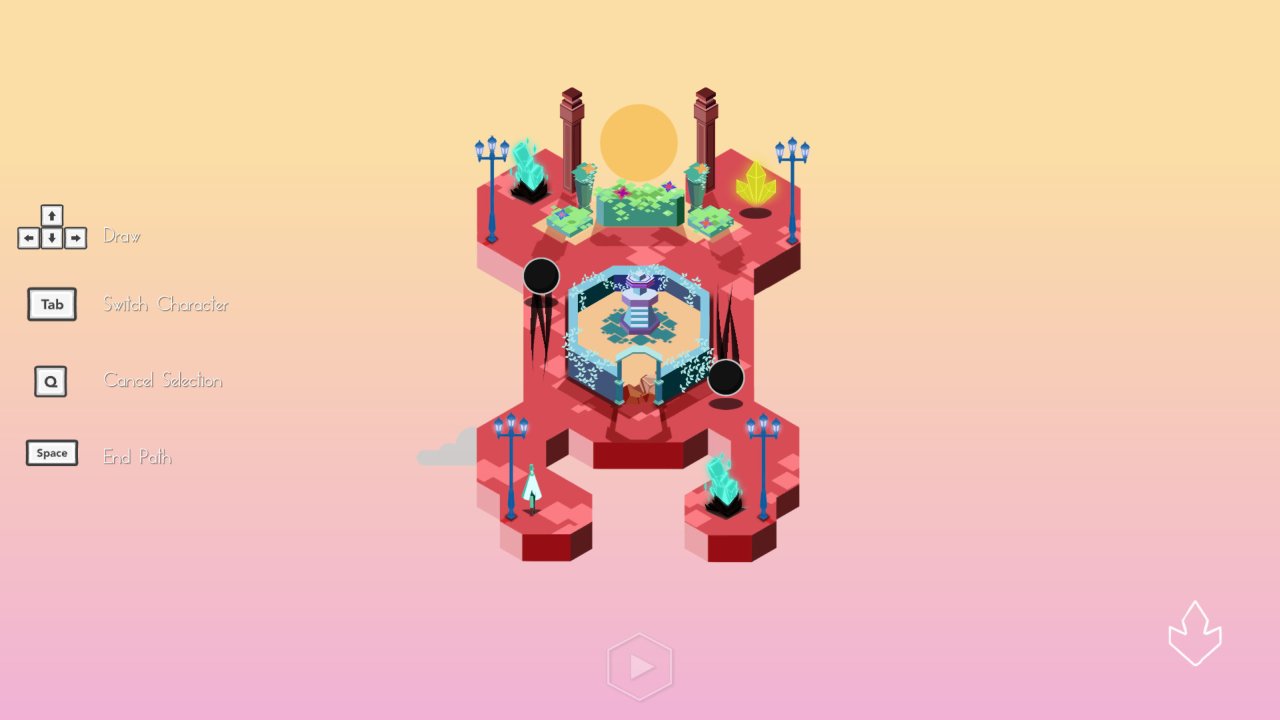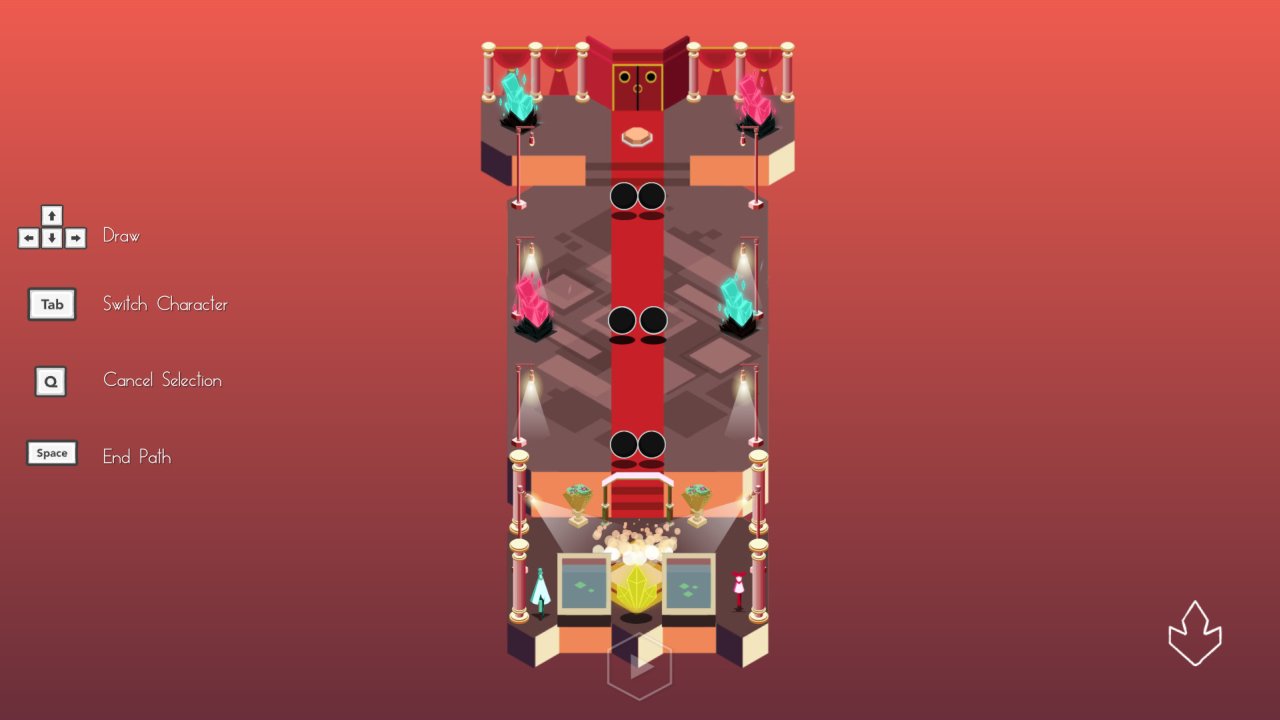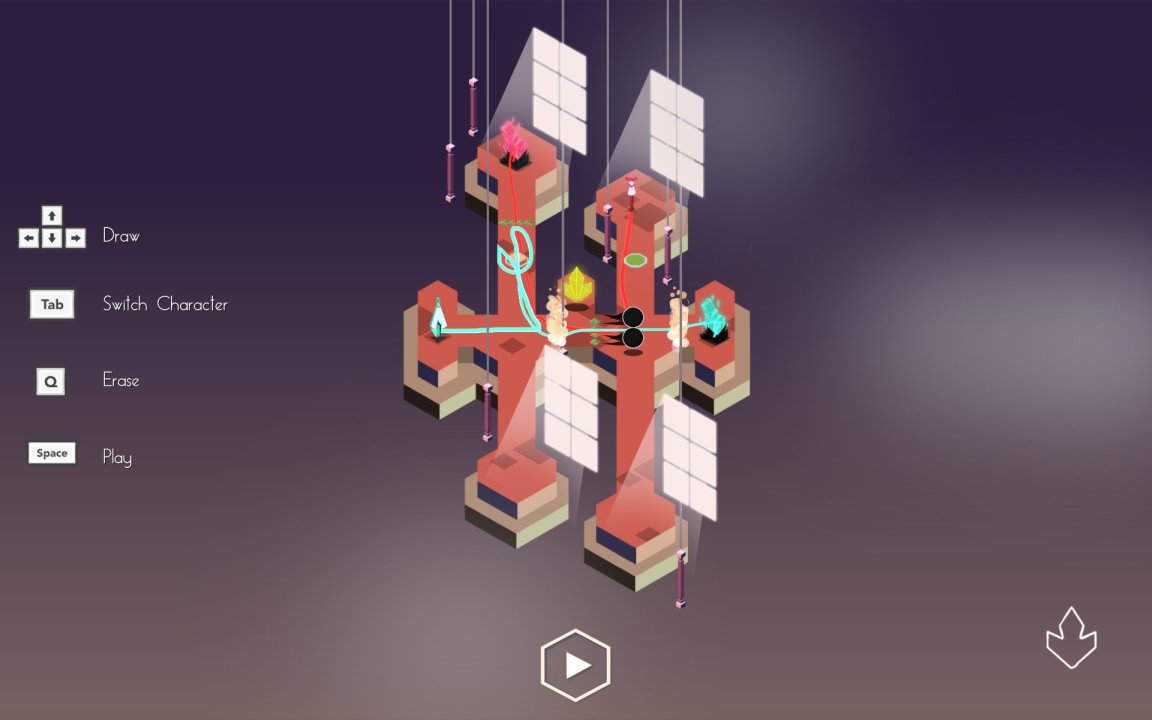Umiro Review
Timing is everything, else you must try again
It has been interesting to observe over the years as many console games have made their way to mobile phones, from Max Payne to Final Fantasy. But this trend has also been executed in reverse in recent years, with many developers choosing to port their polished, bite-sized mobile games over to the PC via Steam. Traditional publishers such as Devolver Digital have picked up on this trend, and Umiro from developer Diceroll Studio has been newly released on the platform alongside its mobile debut.

As with most mobile puzzle games of this ilk, there's not much of a story to tie the series of levels together. Players take control of two characters, named Huey and Satura (as in, Hue and Saturation, get it?) who have somehow got themselves trapped in this mystery world. The girl, Satura, especially does not have many memories of how she arrived, or even who Huey is, and reluctantly agrees to go along with the boy and hope to find an escape. The game's only narrative moments occur during very brief text speech bubbles during some levels, and there are also occasional short cutscenes in the form of a few nicely drawn images. Because it's a port of a mobile game, sadly these storyboards are limited to the center of your screen.
You'll be working through 40+ levels, each offering a small 2D environment. The goal is to take both characters from their starting location, and lead them to two or more crystals. The added twist is that each character needs to go to their own color of crystal, so you're not just running to the nearest one. The puzzle consists of two stages. You must first draw a path for both characters. The path must eventually end at a crystal before it is "locked in"; the crystals also act as checkpoints/stopping points, as you'll often have to then plan the next path to the final pair of crystals. Once you've got a path laid out, the second phase can begin by pressing the "Play" button and observing the characters follow the path you've drawn. To the game's credit, timing your characters together is not too bad because as you draw, you can see where your other character will be along their path at the same time. You can also re-draw a path from any chosen point if you need to make alterations.
Of course, Umiro is not so simple, and soon hazards of various types are introduced. At first, you must contend with black orbs; they can be stationary, or moving at various speeds on a set path. Touching them results in failure, and a return to the drawing stage. In the next set of levels, we are introduced to deadly gasses, which can be shut off by stepping on buttons of corresponding color; but beware, deactivating some paths will close off others. The buttons are also one-time activations only, so you cannot undo your action. As such, the levels actually do have a failure state, as your characters could get stuck at a checkpoint with no way out, so the entire thing has to be reset. In the third chapter, a new mechanic is introduced in the form of a shield that can be picked up and allows you to pass through a black orb once. This of course changes the dynamic of some of the levels, and makes you think even more about how to walk through a stage. And lastly, the final chapter features an item that freezes the orbs in place. All of these mechanics certainly provide solid groundwork for a variety of mental exercises.

But you'll quickly realize where the core aspects of Umiro lie – this is a puzzle game focused entirely on trial and error, timing, patience, and a bit of luck. Due to the plan/execute structure of the game, there is little room for any clever tinkering or planning ahead, as you never know exactly how things will play out. Your biggest enemy, the black orbs, move at various speeds depending on the level and the length of their path. So there's never a sense of timing or sync, you're always just trying to execute until it works. You must time the black orbs, time walking over the buttons/items, time both characters, and also time when you actually choose to press play, as the game world/orbs are always moving. So even just by deciding when to start the character movement, your results will vary, as the orbs will be in different positions. The abovementioned freezing mechanic can also screw you up, and freeze the orbs right in your way.
As such, the final two chapters become a repetitive, and often frustrating, grind to get your paths and your timing right. The only thing you can do to adjust your timing is have the character(s) walk in place/in circles to let an orb pass by. It becomes somewhat silly to draw and count how many times your character must spin in place before it's safe to proceed, and then watch it all fall apart and re-start the circling from scratch, since you can't exactly fine-tune it. Both characters fall and screen fades if either hits a hazard, and at times it can be difficult to tell which one was the culprit. The two characters also move pretty quickly, usually faster than the orbs, which adds an additional timing issue to consider.
Getting through all the levels will take a couple of hours, perhaps more if you get stuck on a particular level or choose to tackle the bonus levels at the end. Each level also features an optional bonus yellow crystal, difficulty of obtaining which varies wildly. Sometimes it could be already on your way, other times you'd need to extend your thinking far beyond the necessary paths to complete the level. I am not sure what the reward is for getting all of these optional crystals as I've had my fill of the gameplay grind just from the main levels.

As mentioned, this is a mobile game port, so it runs excellently and features full mouse support as expected. While the cutscenes and the gameplay area is limited to the center of the screen, the sides are nicely blended with appropriate backgrounds and it does not look jarring or out of place. As you draw lines and complete each level, the visuals change from dull grey to full lively colors. The art style is pleasant, as is the background music.
As with most mobile game ports to PC, a question arises whether or not the gameplay is adaptable to playing at home instead of on the go. Umiro will certainly manage to capture your attention as any PC-centric release would, though its design will prove frustrating for players that prefer to overcome obstacles with smarts rather than trial and error, timing, and a bit of luck. Still, the price is agreeable and the presentation is nice.
 Comments
Comments











